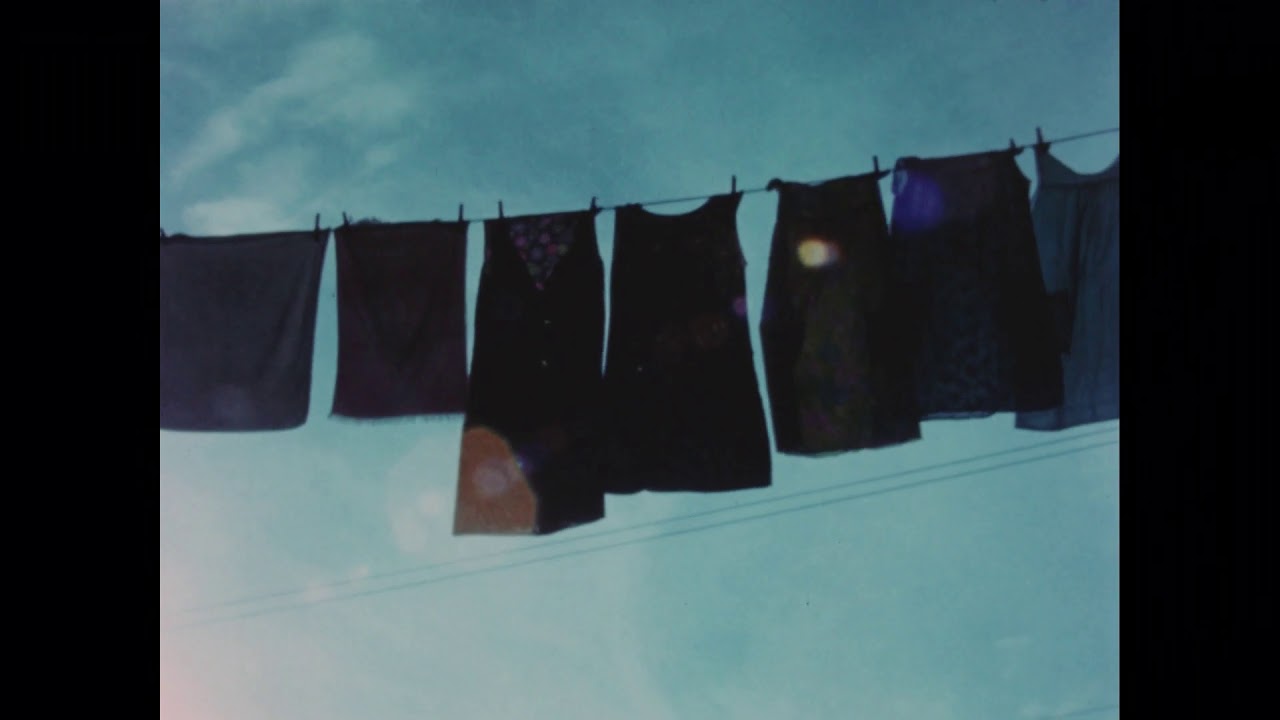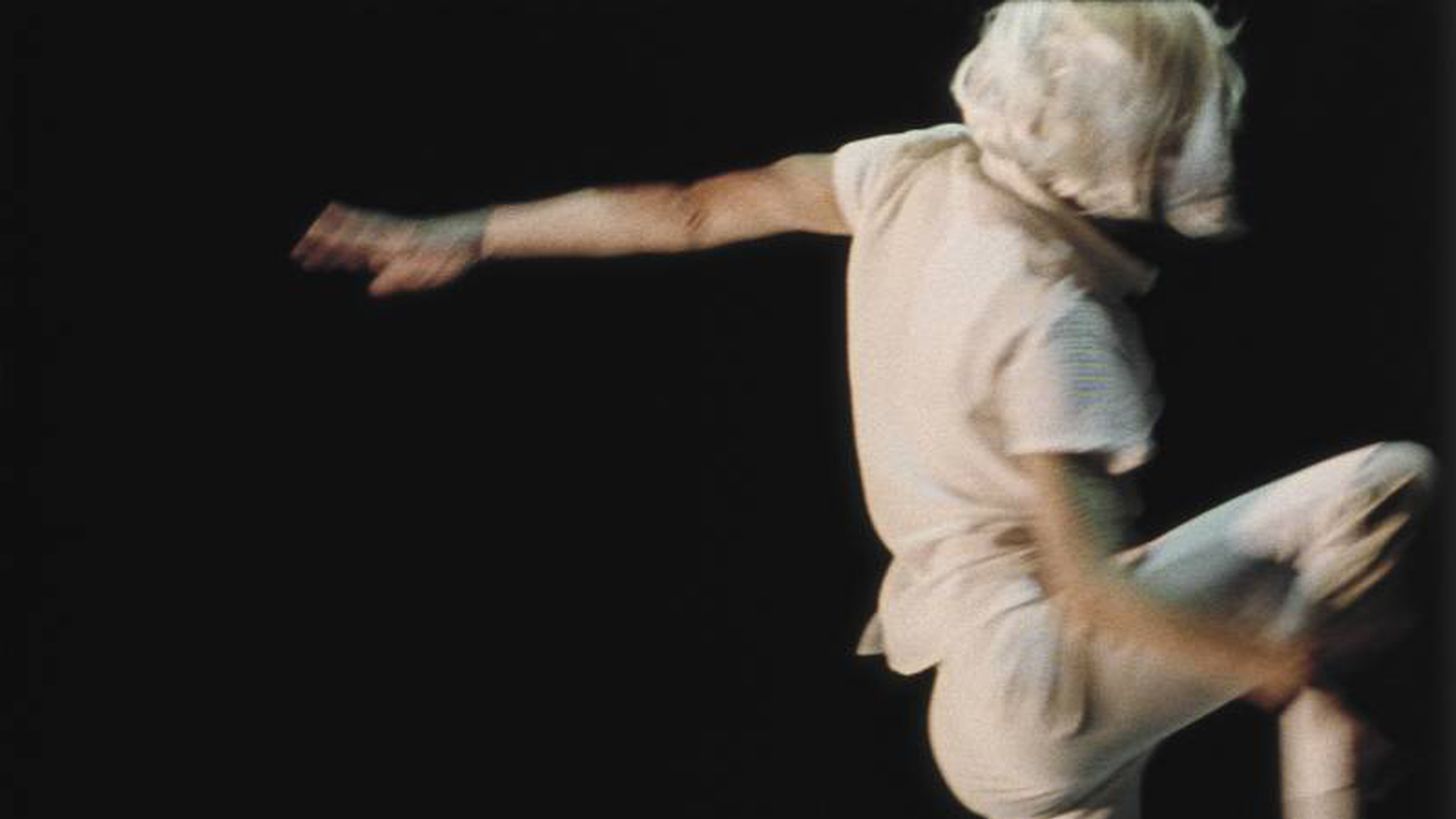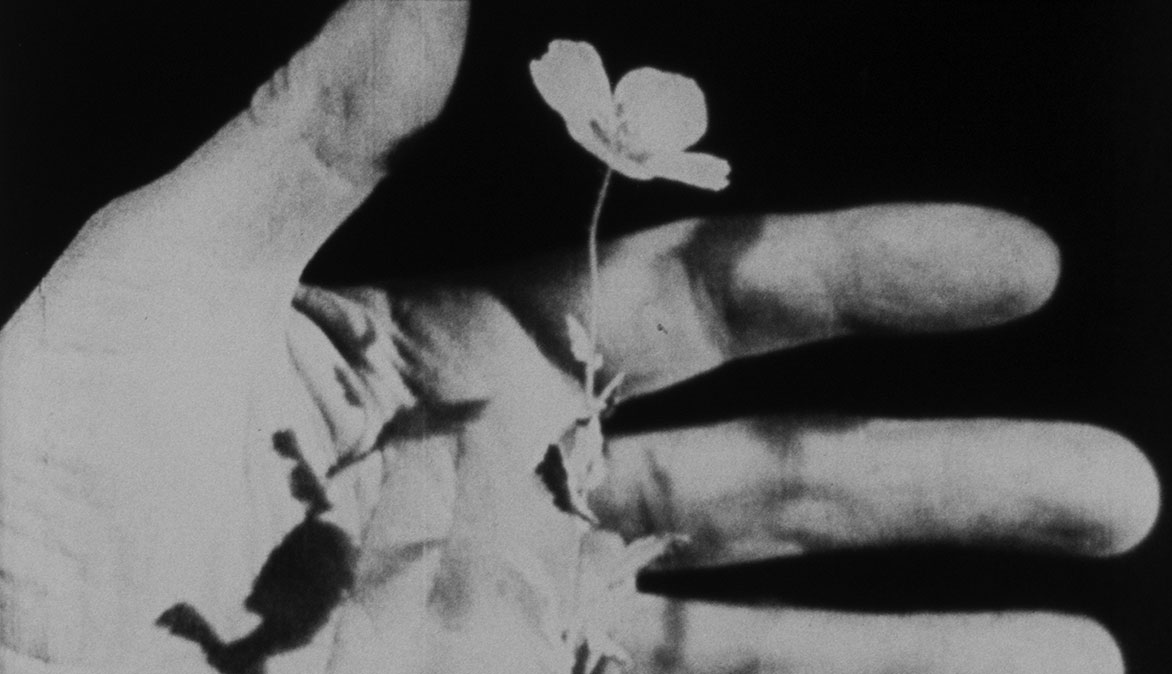
Decodings
March 25 · Knoxville Museum of Art · 10:00 A.M.
92 minutes. There will also be a brief intermission during the reel change.
It’s tempting to believe today that all visual media is readily available with the click of a mouse — if not for free on YouTube then via a small monthly subscription fee or rental charge. In fact, much of the deep canon of experimental cinema exists only on celluloid, stored away in various museums, libraries, galleries, archives, and artist co-ops. Hence our excitement about hosting three of the shorts programs from the touring Canyon Cinema 50 series. Together they provide a masterclass in the history of American avant-garde cinema.
Films that demystify relationships of politics and power are paired with foundational works by key early Canyon filmmakers in Decodings. The program is named after Michael Wallin’s found-footage masterpiece, described by Manohla Dargis as “a profoundly moving, allegorical search for identity from the documents of collective memory.” The program begins with Duo Concertantes, a classic animation by one of Canyon’s earliest filmmakers, Lawrence Jordan, and Billabong, an underappreciated impressionistic documentary of a boys’ youth camp by another key Canyon figure, Will Hindle.
Tom Palazzolo’s 1973 film, Love It/Leave It, offers a portrait of the USA that feels particularly relevant to our current political moment. Lie Back & Enjoy It, JoAnn Elam’s lucid examination of the representation of women in film; artist and filmmaker Cauleen Smith’s 1992 Chronicles of a Lying Spirit (by Kelly Gabron), an “exploration of the implications of the mediation of Black history by film, television, magazines and newspapers” (Scott MacDonald); and Naomi Uman’s classic 1999 found-footage film Removed, which deploys nail polish, bleach, and 1970s pornography to fashion a film where the female figure exists only as an empty, animated space.
The Canyon Cinema at 50 program will be projected in 16mm. New prints are noted with an asterisk (*).
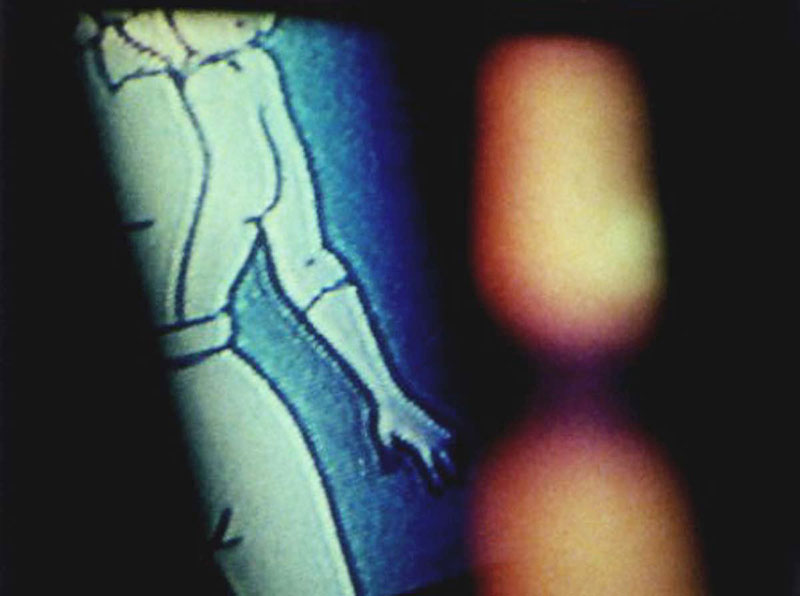
Terrace 49
Janie Geiser, 2004, 5 minutes, color, sound
Images of impending disaster – slamming doors, a truck careening down a hill, and a frayed, almost snapping, elevator rope – collide with the repeated image of a woman’s body, cycling toward ephemerality as the the woman disappears into the texture of the film itself. In my recent films, I have been exploring the possibilities found in merging video texture with film, creating a lush, disorienting, ambiguous film space, and an atmosphere of temporal suspension. In Terrace 49, the space is shattered further, broken into shards; as fractured as memory and as fragile as glass. (Janie Geiser)
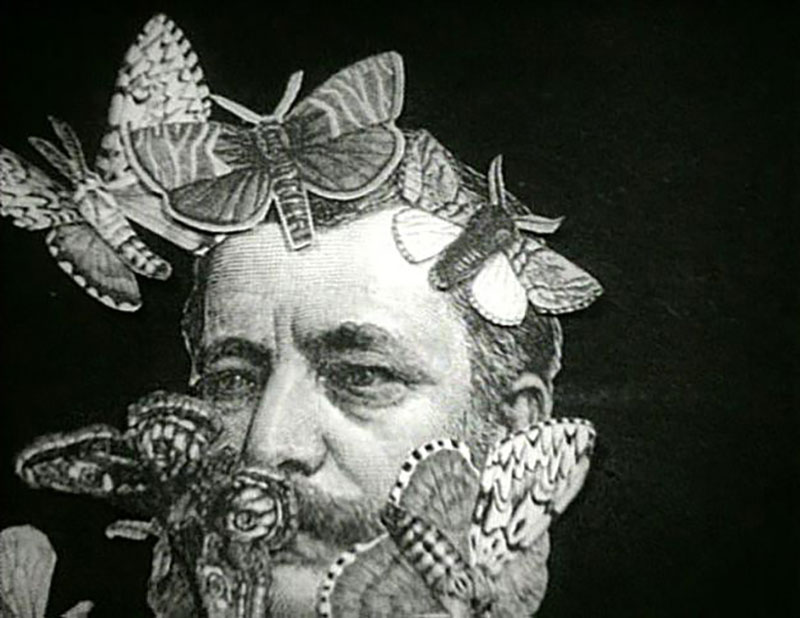
Duo Concertantes
Lawrence Jordan, 1964, 9 minutes, B&W, sound
Created between 1961 and 1964, and composed of two parts, “The Centennial Exposition” and “Patricia gives birth to a dream by the doorway,” Duo Concertantes is one of Jordan’s most celebrated early works. “Birds, butterflies, old engravings, – the mind’s moving fantasmagoria. A binder on the spell of the white witch.” (Lawrence Jordan)
“Jordan’s imagery is exquisite and eloquent, concentrating on simple, repeated use of particularly poetic symbols and figures, a conglomerative effect of old Gustave Dore drawings, 19th century whatnot memorabilia, all fused to a totally aware perception.” (Lita Eliseu)
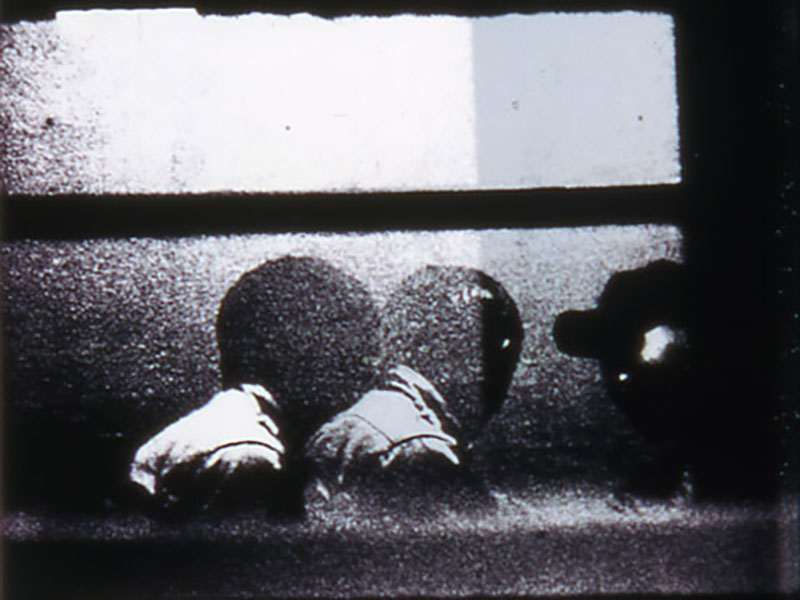
Billabong
Will Hindle, 1969, 9 minutes, color, sound
A remarkably intimate and at times palpably erotic study of boys in a Job Corps camp on the Oregon coast, Billabong is a sensuously humanist encounter with alienated youth, told in the filmmaker’s trademark undulating lap dissolves and scintillatingly grainy high contrasts. Loneliness and longing-for-elsewhere alternate with horseplay and horniness, and hijinks around urinals and pool tables culminate in an ecstatic moment of onanistic release. …[T]here’s an interest in a kind of impressionistic reportage—a fusion of the visual and the “thematic” in which verbal language is just one chaotic, shard-like element among many, its way of “telling” often less privileged than the intimacy between a child’s face and a camera lens, or the way the sun glints on sea foam. (Chuck Stephens)
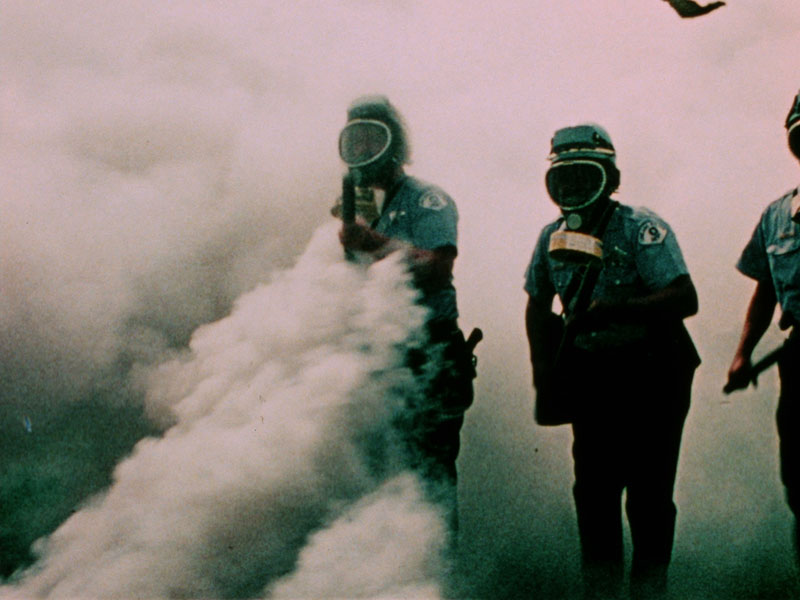
Love It/Leave It *
Tom Palazzolo, 1973, 15 minutes, color, sound
Preserved by Chicago Filmmakers with funding by the National Film Preservation Foundation. A 15-minute almanac of Midwestern America and its funky Americana at the end of the Love Generation, Love It / Leave It begins with proudly naked people parading about for all the world to ogle at the annual Naked City beauty pageant in Roselawn, Indiana, before returning to Chicago, where families literally draped in American flags are found wilting under the heat of the sun along a downtown parade route. Palazzolo has a terrifically restless documentary eye and a winning eagerness to make his points sharp and quick; to just keep cutting, and to keep it all relatively light. …[H]e tends to like what he sees, and he’s disinclined to dick around with the technical fineries of image-making, or to fiddle with any abstractification of the images themselves. What you see is what you get, as heimlich and American as apple pie and neo-Nazis: fragments and fleeting glimpses of neighborhood gatherings and celebrations, ball games, Civil War re-enactments, wrestling matches, rock concerts, and the 1968 Democratic National Convention all join in Love It / Leave It’s visual churn, while Ray Wilding White’s musique concrète soundtrack loops and reloops the film’s titular mantra—a dialectical cri de coeur in which the former proposition is clearly the salutary one: to leave America would be to miss the parades, this rich pageant of life, these boobs and their boobs. (Chuck Stephens)
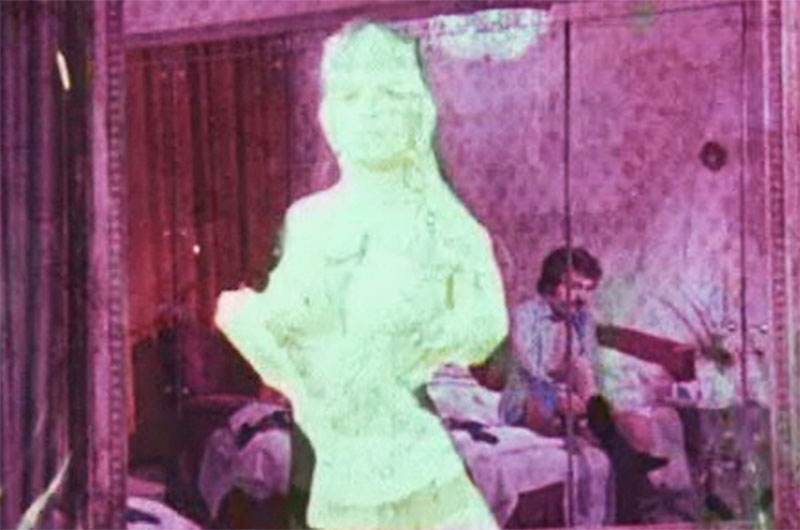
Removed *
Naomi Uman, 1999, 6 minutes, color, sound
Using a piece of found European porn from the 1970s, nail polish and bleach, this film creates a new pornography, one in which the woman exists only as a hole, an empty, animated space. (Naomi Uman)
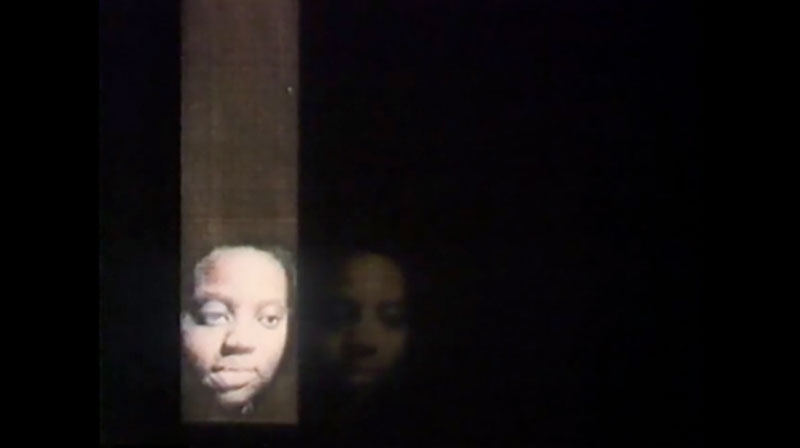
Chronicles of a Lying Spirit (by Kelly Gabron) *
Cauleen Smith, 1992, 6.5 minutes, color, sound
Preserved by the Academy Film Archive. Chronicles of a Lying Spirit (by Kelly Gabron) is less a depiction of “reality” than an exploration of the implications of the mediation of Black history by film, television, magazines and newspapers. Using her alter ego, Kelly Gabron, Smith fabricates a personal history of her emergence as an artist from white-male-dominated American history (and American film history). (Scott MacDonald)
Cauleen Smith’s rapid-fire Chronicles of a Lying Spirit (by Kelly Gabron) likewise concerns the multiplication of personae. With dueling narrators, scrolling text, and collaged photographs, Smith blends autobiography with fantasy, fashioning a character based on the artist who nonetheless seems to exist across centuries, from the Middle Passage to surf-punk California. Even though the film is repeated twice in its entirety, the experience still overwhelms—there’s so much to see, to hear, to unravel, to feel—raising questions which animate the entire screening: When charting your course through a totalizing matrix of oppressive representation, what should you pay attention to? How do you craft your own identity when systems like Hollywood, urban planning, or the art world attempt to define you on their own terms—not yours? And if you’re forced to live a double life, why not use that shifting selfhood as a tactic? (program notes for “Why Couldn’t She Have Two Lives?”, Light Industry, August, 2015)
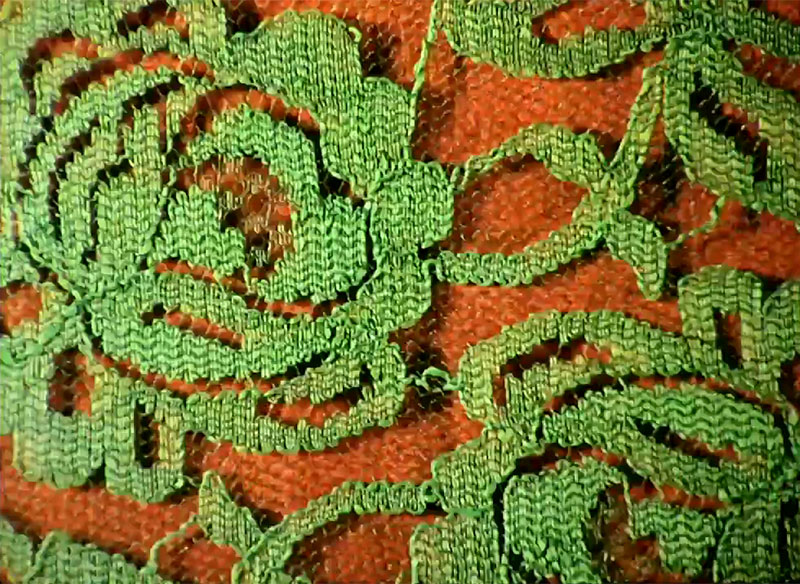
Point de Gaze
Jodie Mack, 2012, 5 minutes, color, silent
Named after a type of Belgian lace, this fabric flicker film investigates intricate illusion and optical arrest. (Jodie Mack)
Point de Gaze wields texture with frenzied sight and a visually seductive force. Mack’s montage creates a silent rush of lace fabric images that stand out and/or blend together in relation to the speed of the edited flow, the latter effect helping to achieve the impression of an object-based reincarnation of Stan Brakhage’s hand-painted works. Despite such a similarity, the short establishes a unique identity all its own through the distinct physicality and tactility of the sensations Mack imparts through her use of 16mm stock and extreme close-ups. (Spencer Everhart)
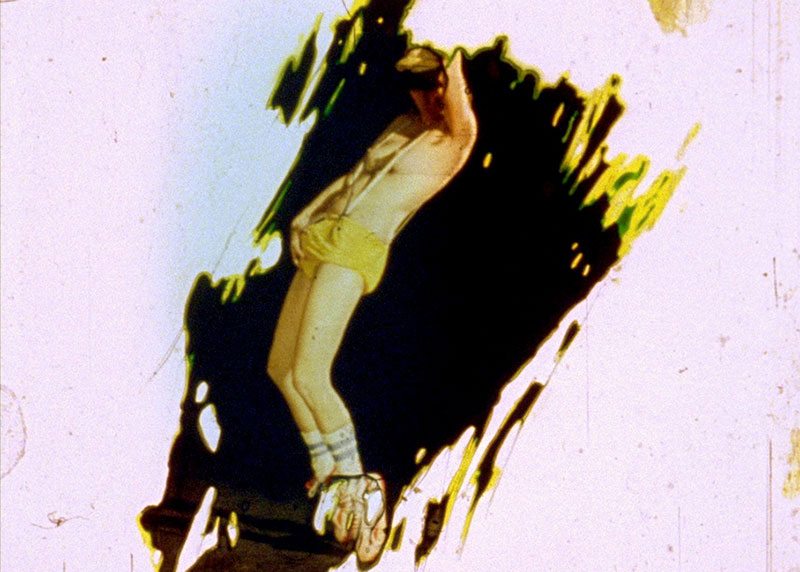
Encounters I May Or May Not Have Had With Peter Berlin
Mariah Garnett, 2014, 14 minutes, color, sound
Encounters I May Or May Not Have Had With Peter Berlin deals primarily with monumentality, narcissism and the ways in which our heroes are embedded into our identities, and manifested through the body. Through a variety of gestures, the pervasiveness of this practice is highlighted alongside its ultimate, inevitable failure. The viewer moves through various stages of anxiety, idolization and actual touchdown with 70s gay sex icon Peter Berlin himself, capturing both the apparent and the hidden. The film guides the viewer through the process of making contact with a figure who exists only in his own photographs.
The film is structured in three parts, which were made chronologically. In the first part the filmmaker appropriates Peter Berlin’s outfits and poses, playfully attempting to embody Peter Berlin’s artistic persona. Each frame of the original 16mm film was then hand-painted to distort the image, producing an animated effect that prevents the viewer from seeing the full performing body.
In the second part, a voice over relates a story riddled with anxiety about a potential meeting with Peter Berlin that is paired with images of mansions and window displays. The third and final section is an interview with Peter Berlin in his apartment, describing a moment of exchange that crosses lines of gender and generation, a moment where the identities of two filmmakers briefly coalesce.
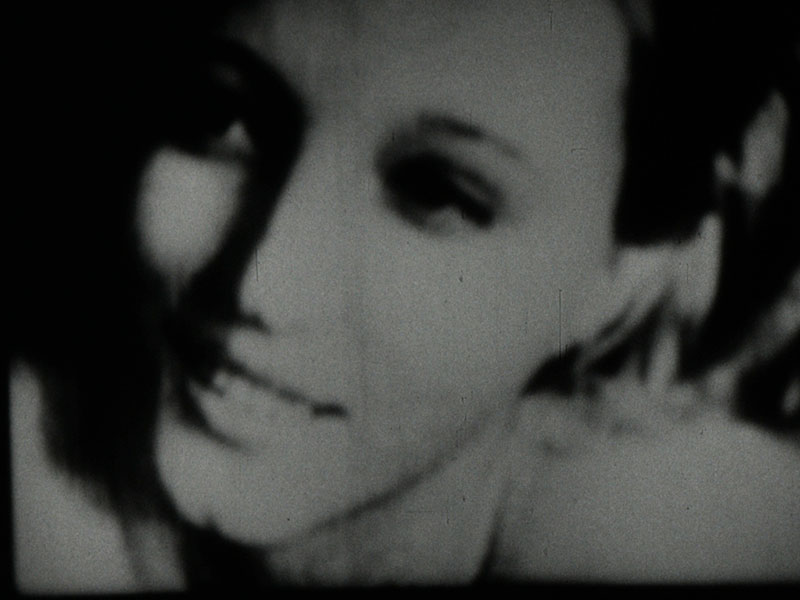
Lie Back & Enjoy It
JoAnn Elam, 1982, 8 minutes, B&W, sound
JoAnn Elam’s Lie Back & Enjoy It is an absorbing eight-minute dialectical film about the politics of representation. More specifically, it examines the politics of filmic representation of women under patriarchy…The film is endowed with remarkable structural and rhetorical lucidity…Everyone who watches movies with women in them ought to see it. (Claudia Gorbman)

Decodings
Michael Wallin, 1988, 15 minutes, B&W, sound
Michael Wallin’s Decodings is a profoundly moving, allegorical search for identity from the documents of collective memory, in this case, found footage from the ‘40s and ‘50s…The search for self ends in aching poignancy with stills of a boy and his mother at the kitchen table, catching the moment that marks the dawning of anguish and loss; desire becomes imprinted on that which was long ago. (Manohla Dargis)
About Canyon Cinema
Canyon Cinema 50 is a yearlong celebration of Canyon Cinema’s fifty years as one of the world’s preeminent distributors of artist made film and media. Canyon Cinema’s unique collection of artist-made films – comprised of digital media, 8mm, Super 8, 16mm and 35mm prints – traces the vital history of the experimental and avant-garde filmmaking movements from 1921 to the present. With a strong emphasis on American West Coast and San Francisco Bay Area filmmakers, Canyon Cinema is the access point to 3,400 ground-breaking works that represents 260 artists.
Canyon Cinema began in filmmaker Bruce Baillie’s Canyon, California backyard in 1961 as a forum for filmmakers to share work with each other and the community. In late 1966, the filmmakers founded Canyon Cinema Co-op. as a distribution company – established as a cooperative, owned and operated by filmmaker members (it was formally incorporated in 1967).

